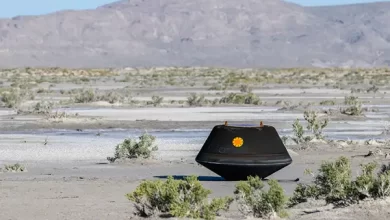Astronomers capture immediate aftermath of black hole destroying a star

For the first time, researchers have observed a star collapsing under cosmic upheaval (cosmic cataclysm) by a black hole weighing six million times the Sun. This process is also called tidal disruption.
This catastrophic astronomical event was closely observed for the first time with the help of NASA’s planetary exploration satellite transiting exoplanet survey satellite (TESS) and the Neil Gehrels Swift Observatory and other plants.
NASA reported that tidal disintegration in the universe is very rare and occurs once every 10 thousand to one million years in the galaxy equal to our own galaxy. Only 40 such incidents have been seen so far.
The study’s lead author, Thomas Holoien of the California-based Carnegie Observatory, said the help of TESS helped to see when the event, called ASASSEN-19BT, actually started, which we had never seen before.
Holoien stated that tidal disruption was soon identified with the all-sky Automated Survey for Supernovas (ASAS-SN) located on Earth and because of this we were successful in observing multi-wavelengths in the initial few days. The initial data will be very important for the understanding of this physical phenomenon.
According to research published in the Astrophysical Journal, this black hole is in the middle of the galaxy ‘2MASX J07001137-6602251’. It is about 37.5 million light years away from the Volans constellation. The size of a cut star can be equal to our Sun.
According to NASA, this cosmic event was discovered on January 29 with the help of an ASAS-SN network with 20 robotic telescopes spread across the world, headquartered at Ohio State University in the US.
NASA reported that when Holoien came to know of the incident from the network’s equipment located in South Africa, he immediately hired two robotic telescopes in Las Campanas, Chile to find the actual location of the event in the universe.
To keep a close watch help from other observatories was also taken. TESS first recorded this tidal dissolution on 21 January.









